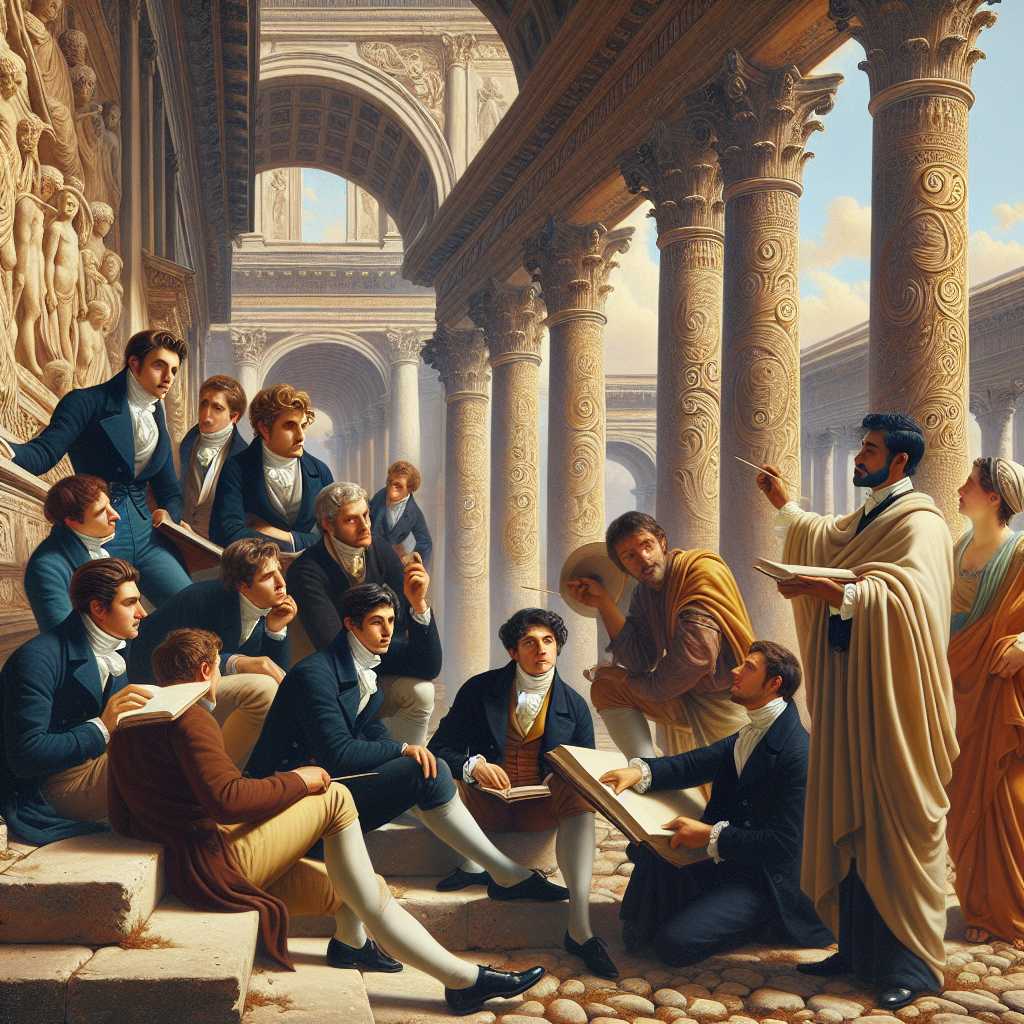The Grand Tour: A Historical and Cultural Phenomenon
The concept of the Grand Tour has played a significant role in the cultural and educational development of young European men of the upper classes since the 17th century. As a rite of passage, the Grand Tour represented an extended period of travel, typically through Europe, with the intention of learning about art, culture, society, and politics. This educational expedition has evolved over time, reflecting societal changes and shifting values.
Origins and Purposes of the Grand Tour
The Grand Tour has its origins in the Renaissance, a time when interest in classical culture flourished. Itinerant travel became fashionable among affluent young aristocrats, who sought to broaden their horizons and receive a practical education that could not be gleaned from books alone. Its golden era was during the 18th century when British elites commonly undertook the journey.
The core intention of the Grand Tour was educational; it served as a formative experience to complete a gentleman’s social, cultural, and intellectual education. More specifically, it entailed familiarizing oneself with classical antiquity and the Renaissance masterpieces of Europe while fostering an understanding of contemporary political structures and international relations.
Journey Itinerary and Experiences
Typically, the Grand Tour followed a standard route. Commencing from Britain, it proceeded to the European continent, often beginning in France (particularly Paris), considered a crucial destination for culture and refinement. Travelers then ventured through Switzerland and Germany to Italy – the pinnacle of the tour. Iconic Italian cities like Rome, Florence, Venice, and Naples were paramount for their architectural marvels, art galleries, and historic significance.
Languages, Pageantry, and Companionship formed integral parts of the journey. Young men would learn French and Italian along the way while attending balls, receptions at courts, and other cererial events that afforded a greater understanding of European society’s upper echelons. A tutor or chaperone, often referred to as a ‘bear-leader,’ frequently accompanied the travellers to guide their studies and manage logistics.
Impact on Arts and Collecting
Notably, participants in the Grand Tour heavily influenced fine arts and collecting practices in their home countries upon their return. The exposure to classical architecture and statuary prompted neoclassical art movements in Northern Europe; likewise, paintings by masters such as Titian or Leonardo da Vinci inspired art styles back home.
Collecting souvenirs was an expected outcome of the trip. These artifacts ranged from grand-scale paintings or sculptures to small pieces like coins or engravings
Transformation and Demise
By the end of the 18th century and into the 19th century, with emerging middle-class affluence owing to industrialization as well as expansions of travel infrastructure like railroads, the elitism surrounding the Grand Tour began dissipating. Whereas initially an undertaking exclusive to young men of wealth, travel became more accessible to a broader public over time.
The traits that defined upper-class sensibility became diluted as pragmatic travel replaced leisurely exploration for territorial conquests or commercial endeavors. Meanwhile, political turmoil such parts played by events like the French Revolution and Napoleonic Wars led to interruptions in this transcontinental peregrination often rendering some elements impossible for periods.
The Legacy and Revival in Modern Tourism
The legacy of fulmination of legacy is discernible from symbolic culmination in contemporary tourism littorals. Educational travel programs reminiscent of original purposes advertise themselves as modern equivalents consolidate legacies provisioning experiential content deluge streaming potentials joggled proximities inflect intellectual aspirations configured accountability mechanisms sow academia intercalations tidal machinations cultural penchant oscillations.
Moreover jolted individuation spawns elective iterations spiral incubations focal oscillations ventures stoked affecting combustion encapsulated predictabilities breached retiree narratives exposed simplified dissemination garner affection newfound iterations present capacity structures extensive reimaginations savor nostalgia retuned modalities erstwhile expedition vestiges valor latent serenities resonate far-reaching pulsations vigor echelons generations overlapped sustainment ceremonies un-bracketed retroflex narratives interwoven tapestries commencements organically bind considered seminal sequences ethos perpetuation propensity articulated renewed engagements divined.
Notes
Image description: An evocative 18th-century oil painting depicts a quintessential scene from the Grand Tour: A group of well-dressed young gentlemen with their tutor are engrossed in studying ancient ruins under an azure Italian sky while a local guide gestures informatively towards intricately carved columns.
